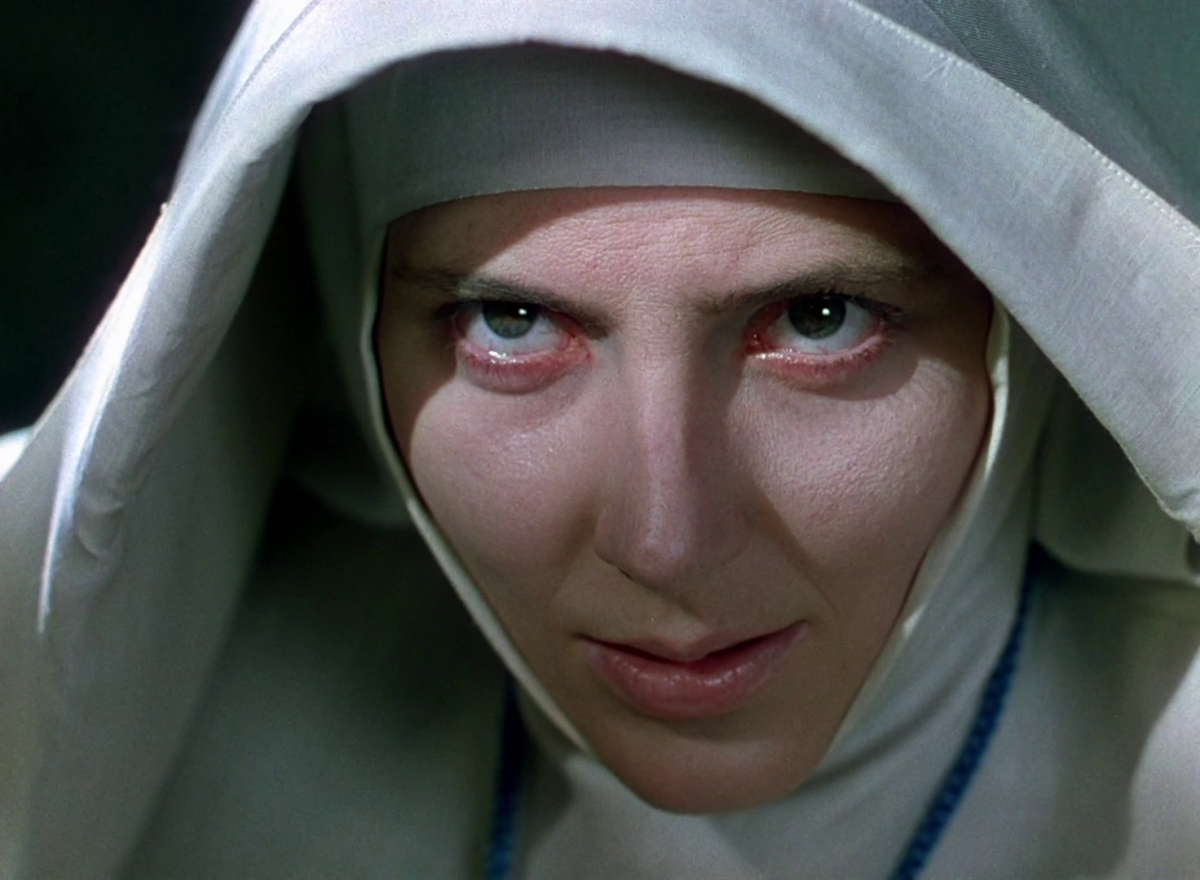Hello! I’m Mark Olsen. Welcome to another edition of your regular field guide to a world of Only Good Movies.
I recently sat down with Michael Mann and the youngest of his four daughters, Becca Mann, to talk about a project they have worked on together to present the filmmaker’s extensive archives. The Michael Mann Archives launched online this week with an astonishing amount of material on the making of Mann’s recent “Ferrari,” starring Adam Driver, Penélope Cruz and Shailene Woodley.
The site — access is $65 — features exclusive video pieces as well as script pages, annotated notes, never-before-seen photos and much more. As to why he wanted to share all of this material, the notoriously exacting Mann said, “Directors have no idea how any other director makes a movie. And so we each evolve our own particular process. This is an opportunity to pass that on, convey something I’m just very enthusiastic about. I think it is the best work that any man or woman can do, period. And I’ve thought that since I was 20 years old. And my enthusiasm for it is absolutely unwavering and unremitting.”
Mann also mentioned that he is finishing the script for the adaptation of his own novel, “Heat 2,” with a plan to be shooting by the end of this year or early in 2025. As to rumors about the likes of Driver and Austin Butler being cast in the project, Mann said simply, “I can’t talk about that.”
Thelma Schoonmaker on Powell and Pressburger
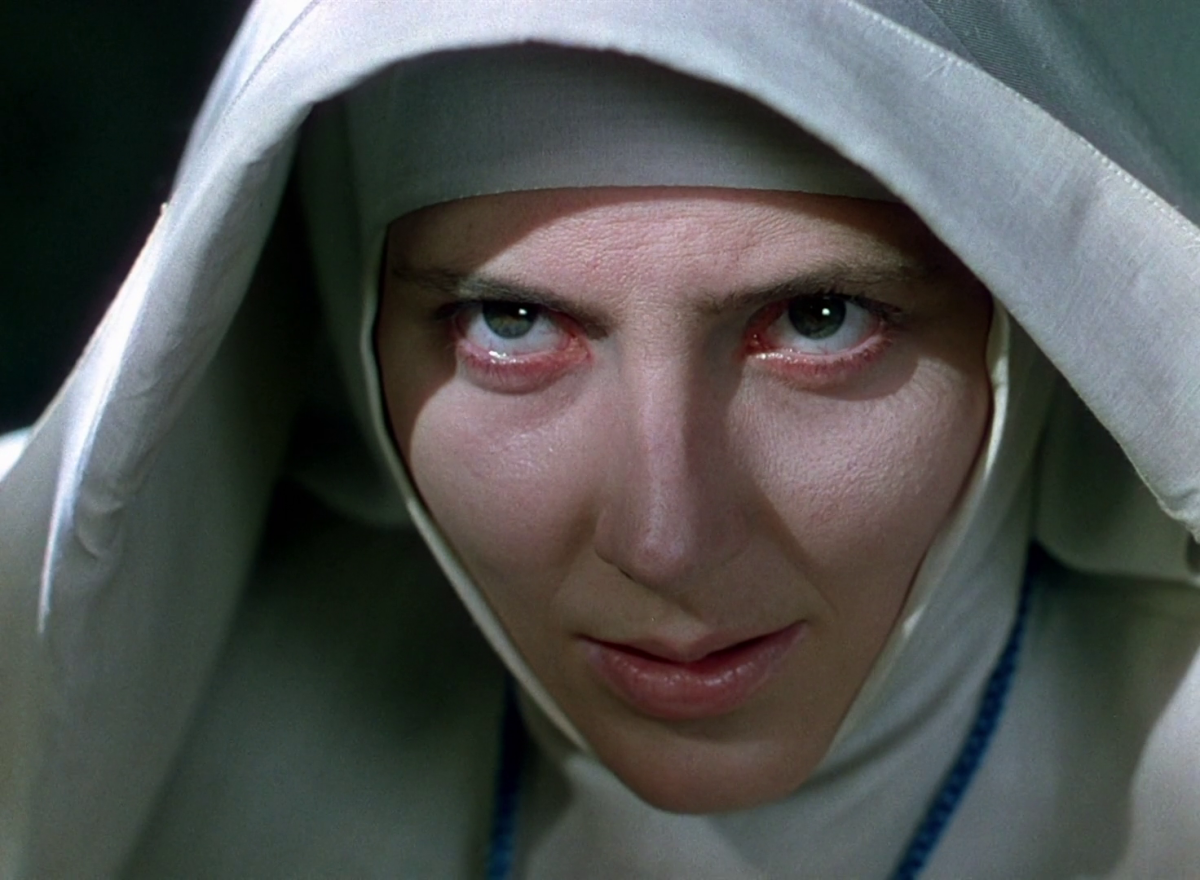
Kathleen Byron in Powell and Pressburger’s 1947 “Black Narcissus.”
(Academy Museum)
The Academy Museum has launched a series called “Tellers of Tales: The Films of Powell and Pressburger” to celebrate the work of the directing, writing and producing duo of Michael Powell and Emeric Pressburger. The series began last night with a 35mm nitrate screening of 1947’s “Black Narcissus” followed by a Q&A with Powell’s widow, film editor Thelma Schoonmaker.
A three-time Oscar winner best known for her collaborations with Martin Scorsese, Schoonmaker has overseen restorations of numerous Powell and Pressburger films. The Academy series includes 4K restorations of “I Know Where I’m Going!,” “A Matter of Life and Death,” “The Tales of Hoffmann,” “The Small Back Room” and Powell’s solo “Peeping Tom.” “Gone to Earth” and “The Elusive Pimpernel” will screen in 35mm, along with showings of “The Life and Death of Colonel Blimp” and “The Red Shoes.”
Next week will also see the Los Angeles premiere of “Made in England,” a documentary about Powell and Pressburger directed by David Hinton and narrated by Scorsese.
Schoonmaker was married to Powell from 1984 until his death in 1990, having met through Scorsese. She got on the phone this week from New York to talk about the films and her life with Powell.
What has it been like for you working on these recent restorations?
Well, it’s heavenly because I love the films and I have to watch them over and over and over when we’re restoring them. The thing about these Powell/Pressburger films is you never get tired of them. Plus, you never know what’s going to happen in the movies either. So there are always surprises and little bombs that they place. Emeric [Pressburger] called them little bombs they put in the movie that explode later. Some detail that you don’t really notice it that much, but later it plays a big role. So I just loved restoring these movies. It’s a thrill. And to see them come to life like they were originally released is just fantastic.
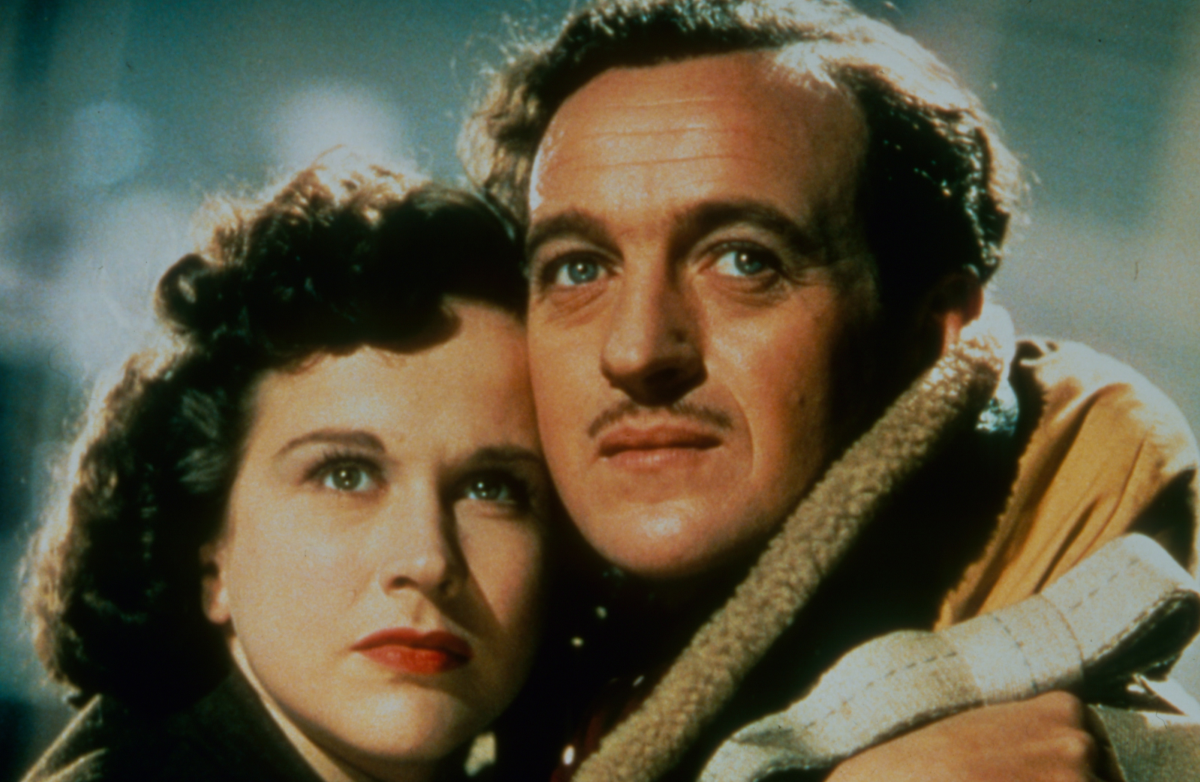
Kim Hunter and David Niven in “A Matter of Life and Death.”
(Academy Museum)
For you, what was special about their collaboration? What do you think it was about the two of them that allowed them to work together in such a wonderful way?
I think that Michael’s admiration for Emeric’s beautiful mind, as he called it, was so huge that that’s why he agreed to the “written, produced, and directed by” title of their logo [the Archers]. Because, after all, he’d done 23 films, I think, before he met Emeric. And he never felt any of them were coming from his heart. He didn’t feel they were strong, wonderful ideas to give to the world. So when he met Emeric, then he found what he needed, which was someone who could help him do that. Emeric was a European, Michael had spent a lot of time in France, so they shared a desire to make films for the world, not for just the United Kingdom. I just think it was a magical marriage of a beautiful mind and someone who really knew how to direct movies. The two of them, they were very courageous and unusual.
How did your personal relationship with Michael deepen your appreciation of his work?
Well, I didn’t need to deepen the appreciation of his work, but learning what he was like was quite a revelation. He asked me to put on his gravestone, “Film Director and Optimist.” He never gave up. He wrote scripts all the time. He wrote a hundred ideas, maybe not fully scripted but sketched — could never get any of them made for 20 years. He never wasted a second of any day.
And when he died, I frankly didn’t want to go on living, but he left a little furnace burning inside of me, his legacy. And so I’ve been able to share that, fortunately with Marty, the two of us have carried on with his legacy. And so being given this legacy has made the rest of my life after I lost Michael just incredible. I’ve had the best life with the best job anyone could ever have for 50 years, and then 10 years living with Michael. So I’ve had it all.
And I love going around the world and seeing how this explosion of interest in Powell and Pressburger is happening now. It’s happening all over the world. It’s just fantastic to see this burst of love for these films. We just seem to have hit the right time. And young people are pouring into these Powell/Pressburger retrospectives everywhere. When I was doing stuff at the British Film Institute at the end of last year, they did a massive retrospective. And when I was doing Q&As on the stage, I would look out, and I would see half the audience was young people. And that’s something new. They’re looking for something and they’re finding it in these movies.
And do you have any sense of what that is? Why do you think young people are responding to these movies?
As Marty said, he loves the characters. And I think the reason is that both Marty and Michael never wanted to deal with heroes and villains. They wanted to deal with the gray area in between, that we all are. We’re particularly fascinated by complicated characters. And they’re also very lovingly made, these Powell/Pressburger movies, this loving way of approaching humanity. I think that is what the young people are finding.
And they also love the color. When we do these Technicolor restorations, the color is so astounding, and they’re not used to seeing that color anymore. Many young people have come up to me and told me how much they love that. So the films are very rich. You never know what’s going to happen in them. They challenge you, they open you up to new ideas.
Critic Jonathan Rosenbaum: ‘An airplane, not an airport’
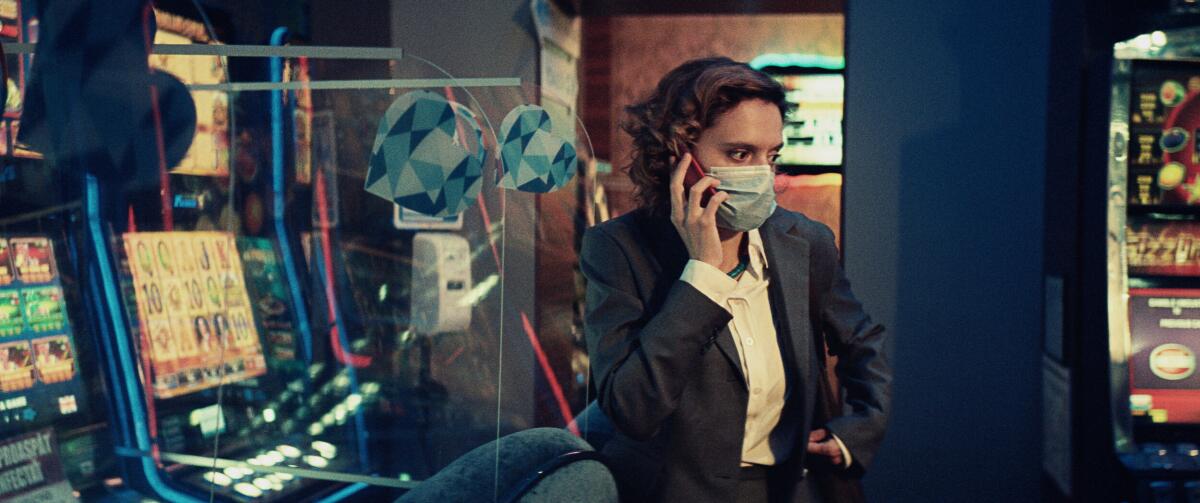
Katia Pascariu in “Bad Luck Banging or Loony Porn.”
(Magnolia Pictures)
On Tuesday, Acropolis Cinema will present an evening with critic Jonathan Rosenbaum for his new book “In Dreams Begin Responsibilities: A Jonathan Rosenbaum Reader,” published by the L.A.-based Hat & Beard Press. The evening will include a screening of Radu Jude’s 2021 “Bad Luck Banging or Loony Porn,” followed by a Q&A with Rosenbaum. The film will be preceded by a video introduction from Jude.
The book covers some six decades of writing from Rosenbaum, film critic at the Chicago Reader from 1987 to 2008, whose other books include “Moving Places: A Life at the Movies” and “Midnight Movies,” co-written with J. Hoberman. The new book includes pieces that have never been anthologized, combining Rosenbaum’s influential film criticism with his literary criticism and writings on jazz.
Rosenbaum got on the phone this week from Chicago to talk about the state of film criticism and film culture more broadly.
Do you feel like criticism as an art form and a profession is in decline? How do you see the culture industry right now?
There are a lot of people my age who think that it’s a very bad period, but I disagree with them. What’s changed everything is the internet, of course. And there’s more of everything. There’s more bad stuff and there’s also more good stuff. I think it’s just that one can be a bit overwhelmed by how much of it there is, and how much of it is worthless. It becomes easy to see it as negative because if you want to see it in a positive light, you have to dig for the stuff that’s good.
But I actually think that one thing that’s also evolved in my position is — this is something I say at the beginning and end of the book — when I once interviewed Godard, he said to me, “I want to be regarded as an airplane, not as an airport.” And what that suggests is that people take you to where they want to go. So in other words, you become part of what they’re interested in doing, not what you’re interested in. I hate the idea that a critic is supposed to have the first word or the last word, either one. I think that’s a mistake. I think what a critic does is enter into a public discussion that started before the critic comes along and continues after the critic leaves. I don’t think that minimizes the importance of criticism, but it’s not simply about telling people what movies to go see.
What are you looking for in contemporary movies like “Bad Luck Banging or Loony Porn”?
It’s not what I’m looking for. I actually want to be guided by others. It’s not like I’m trying to impose an agenda. I think the biggest problem today that people face is that there’s so much to choose from, more than there’s ever been before. And in a lot of ways that’s good, but in a lot of ways it’s bad because it makes people revert to even being more passive and don’t want to make up their own minds or go looking for things that they might find interesting.
“Bad Luck Banging or Loony Porn” was something I suggested because the next-to-last piece in the book is a piece on that and a piece on a film made 50 years earlier, “W.R.: Mysteries of the Organism.” They both deal very much with a contemporary state of things. There are certainly lots of ways in which politics creeps into the book, and I’m in some ways critical of “Bad Luck Banging” as well as appreciative. It’s a good index, basically almost like state-of-the-planet films. One of the things I do with film criticism, and my other kinds of criticism too, is that I use it as a way to get to other subjects. Like when I was writing for the Reader, sometimes I would choose to write about a film not because I found the film interesting but because I found the topic that it was addressing worth thinking and writing about.
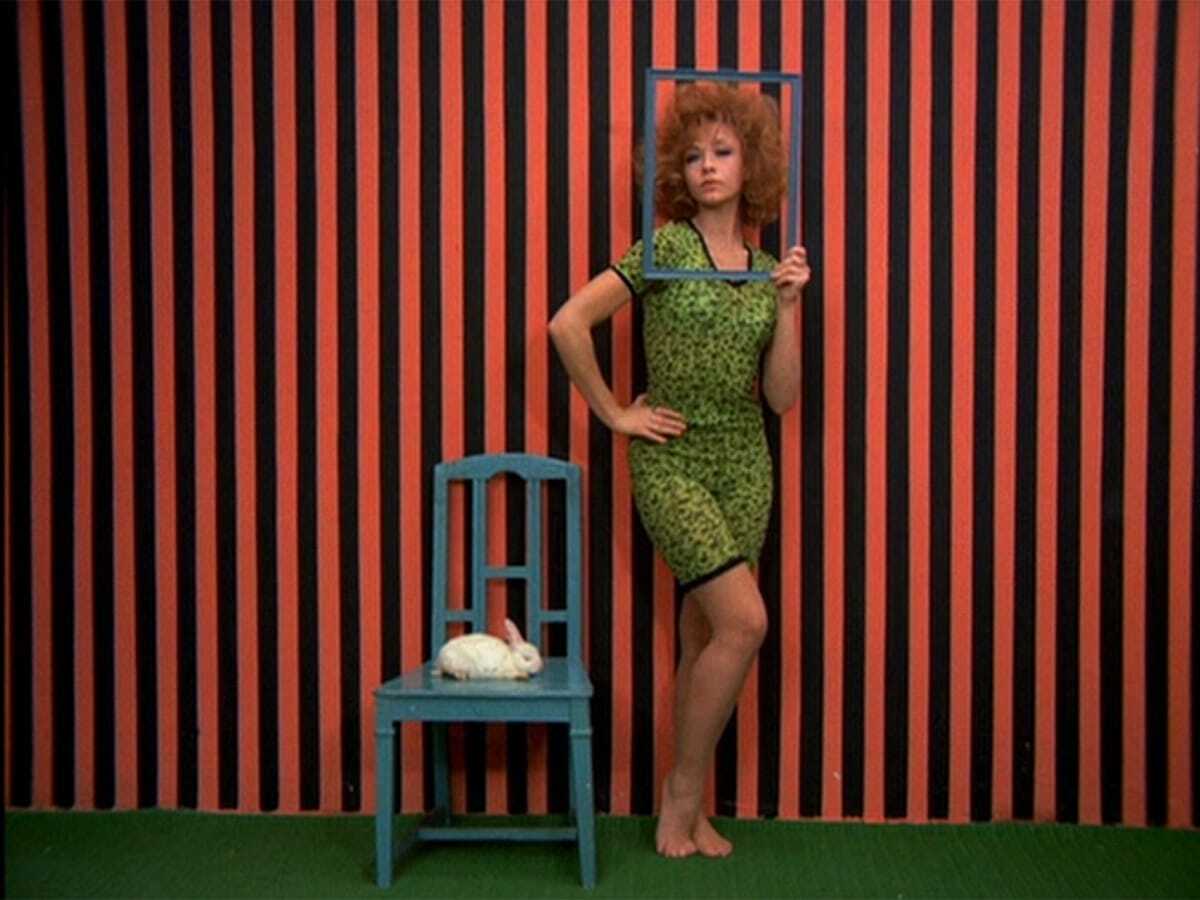
An image from 1971’s “W.R.: Mysteries of the Organism.”
(Janus Films)
Do you find that your relationship to Hollywood has evolved over the years?
I’m very distanced from Hollywood. But on the other hand, part of the reason for that might be the fact that I grew up in a family of exhibitors and so I was seeing all these movies for free and I grew up almost, like, inside Hollywood. So there’s part of me that wants to analyze that aspect, but I’ve often said, and I am happy to say it again if I was asked: What is the greatest national cinema in the world that I’m aware of? I would say it would be the American cinema, which is primarily Hollywood. The situation for making movies now is quite different from what it was when I was growing up. And in that sense, Hollywood is to me less appealing than it used to be. That might be partly a reflection of my age too.
So much of what happens in criticism, in reviewing, is based on economics and the control that the industry largely has over what’s written about it. When I was working for the Reader, whatever I was writing about each week, I had to make it seem like it was important, because otherwise it wouldn’t be worth writing about or reading about. But when you make it important to that week, you then have to forget about it in order to make room for what was coming up next week, which is supposed to be comparably important. So there’s a kind of built-in fraudulence to the way that film reviewing works, which has a lot to do with the relationship with the film industry. People used to sometimes criticize me at the Reader saying, “Why are you always writing about films I’ve never heard of?” And I thought, well, what you’re really saying is: Why are you only writing about films that don’t have multimillion-dollar ad campaigns? And of course those are the films that need attention more.
Points of interest
‘The Terminator’ at Vidiots
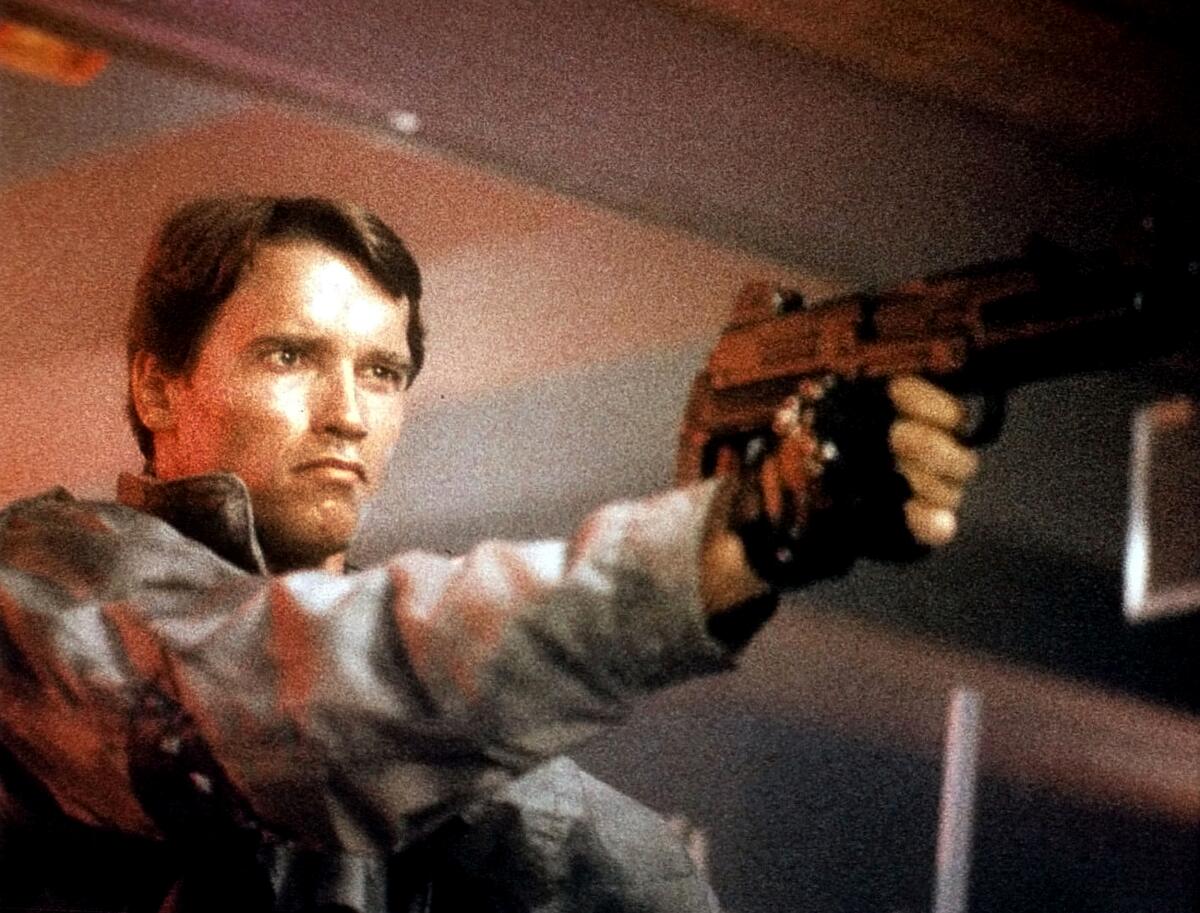
Arnold Schwarzenegger in 1984’s “The Terminator.”
(Orion Pictures)
On Wednesday, Vidiots will screen James Cameron’s 1984 cyberpunk action classic “The Terminator” as part of the nationwide Art House Theater Day. Cameron and producer/co-writer Gale Anne Hurd participated in a prerecorded Q&A with Vidiots director of programming Amanda Salazar that also will be playing in theaters around the country.
Considering the juggernaut of 1991’s “Terminator 2: Judgment Day,” it’s easy to forget just how masterful the first “Terminator” remains, as well as the project’s roots as an independent film. A guerrilla fighter from the future, Kyle Reese (Michael Biehn) is sent back in time to protect a waitress named Sarah Connor (Linda Hamilton) from the seemingly unstoppable killing machine known as the Terminator (Arnold Schwarzenegger).
In his original review of the film, Patrick Goldstein wrote, “Directed by James Cameron in the cheeky, gung-ho tradition of ’50s sci-fi pulp fiction, the film has a sleek economical pictorial style. … This ominous fantasy will prick up your ears — it has the unsettling air of a scare story that doesn’t just send a shiver down your spine, but deftly collides with your imagination.”
‘Family Portrait’
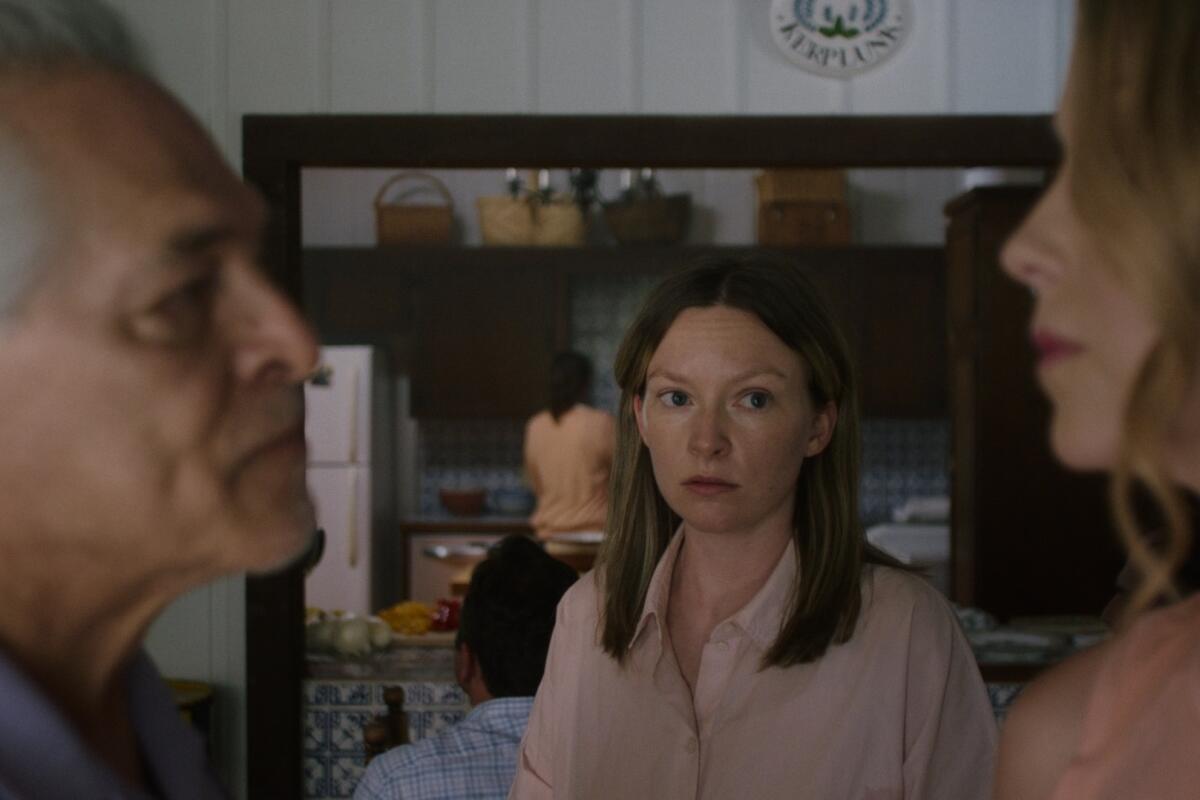
Deragh Campbell, center, in the movie “Family Portrait.”
(Factory 25)
Tonight and tomorrow, Now Instant Image Hall will screen Lucy Kerr’s “Family Portrait,” which won the director prize at the Locarno Film Festival last year. Kerr will be in attendance both nights, in conversation with writer-director Courtney Stephens on Friday and filmmaker Kersti Jan Werdal on Saturday.
Deragh Campbell (“Anne at 13,000 Ft.”) stars as a young woman who has joined her extended family for a group photo. And while the film opens like a conventional indie family drama, it steadily veers off into something enigmatic, taking on an increasingly unsettling air: No one seems to want to acknowledge what is obviously happening right in front of them.
Ingmar Bergman at the New Beverly
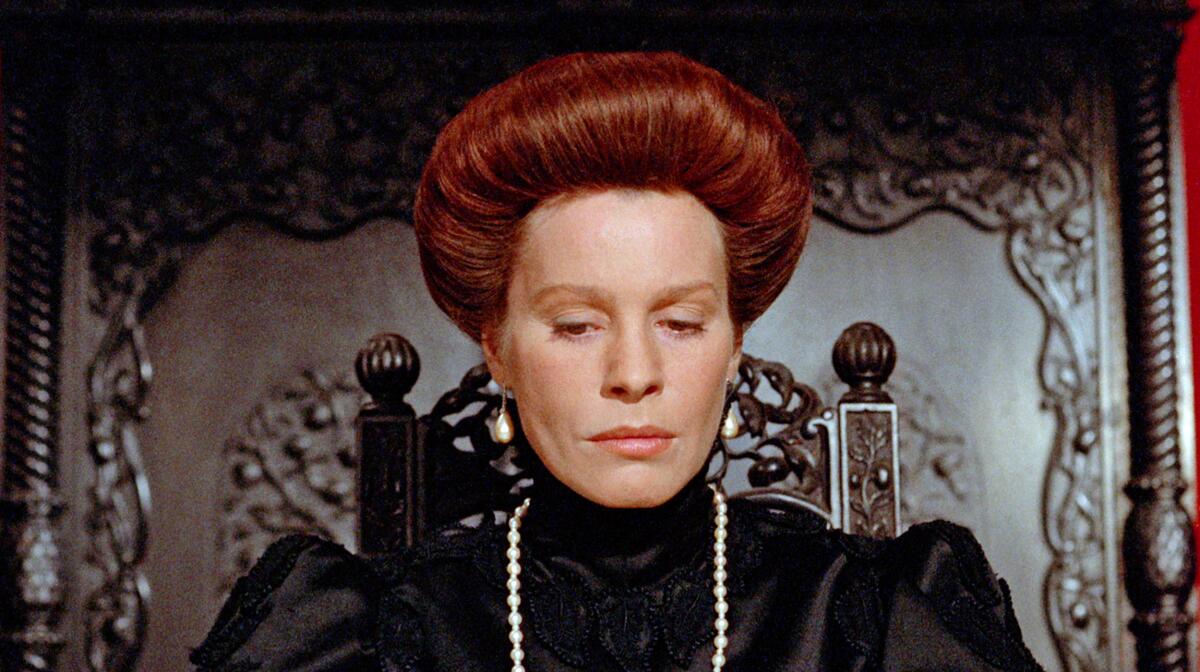
Ingrid Thulin in Ingmar Bergman’s 1972 psychodrama “Cries and Whispers.”
(New World Pictures)
As part of the New Beverly’s tribute to the deep legacy of Roger Corman, next Tuesday, Wednesday and Thursday will see a double bill of pictures directed by Ingmar Bergman that Corman distributed in America via his New World banner.
With its deeply stylized use of color, “Cries and Whispers” from 1972 is the story of two sisters (Liv Ullmann, Ingrid Thulin) waiting for their other sister (Harriet Andersson) to die from a prolonged illness. Nominated for five Oscars, including picture, director and screenplay for Bergman, it won for Sven Nykvist’s cinematography and has become one of the auteur’s signature movies.
In his original Times review, Charles Champlin wrote, “I am chary of superlatives, the coinages are debased too fast. Yet I have no doubt that ‘Cries and Whispers’ is a surpassing example of the film-maker’s art, the best film Bergman has done in many years and a masterwork likely to be watched for years. It is, not least, a brave film in its uncompromised exploration of the somber furnishings in the dark red night of the soul, Bergman’s and our own.”
1978’s “Autumn Sonata” stars Ingrid Bergman as a concert pianist reuniting with her estranged daughter, played by Ullmann, for an extended confrontation.
In his original Times review, Champlin wrote, “In the twilight of her career, Miss Bergman has returned to her native language to do what may well stand as her most impressive performance of all, a masterpiece.”
Also in the news
Nicole Kidman on ‘Eyes Wide Shut’
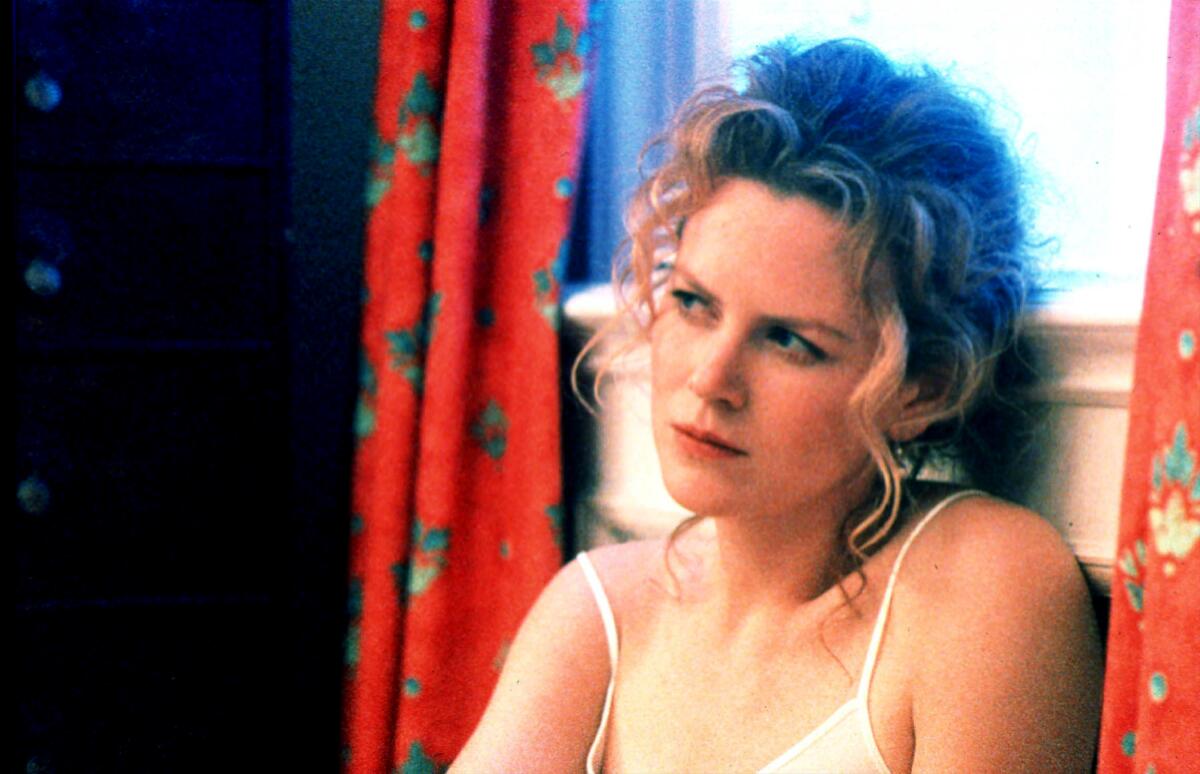
Alice Harford (Nicole Kidman) in Stanley Kubrick’’s “Eyes Wide Shut.”
(Warner Bros. / Getty Images)
This week marked the 25th anniversary of the release of Stanley Kubrick’s final film, “Eyes Wide Shut.” It was not well received by the majority of audiences or critics when it first came out, though its reputation has transformed over the years and it has now become much admired and even beloved. I very much remember seeing the film at a late show during its opening weekend at New York City’s Astor Plaza theater off Times Square (long since closed) and the palpable sense of discontent as the audience became increasingly baffled by what they saw.
Glenn Whipp spoke to one of the film’s stars, Nicole Kidman, for a terrifically candid and engaging conversation about her experiences shooting the movie with her then-husband, Tom Cruise. The film is a portrait of marriage and jealousy (with some tantalizing conspiracy theories tossed in), and Kidman was aware that Kubrick was at times using the real-life couple he cast in the movie to expand on the material.
“I suppose he was mining [our marriage],” Kidman said. “There were ideas he was interested in. He’d ask a lot of questions. But he had a strong sense of the story he was telling. I do remember him saying, ‘Triangles are hard. You have to tread carefully when it’s a triangle.’ Because one person could feel ganged up on. But he was aware of that and knew how to manage us.”
‘Longlegs’
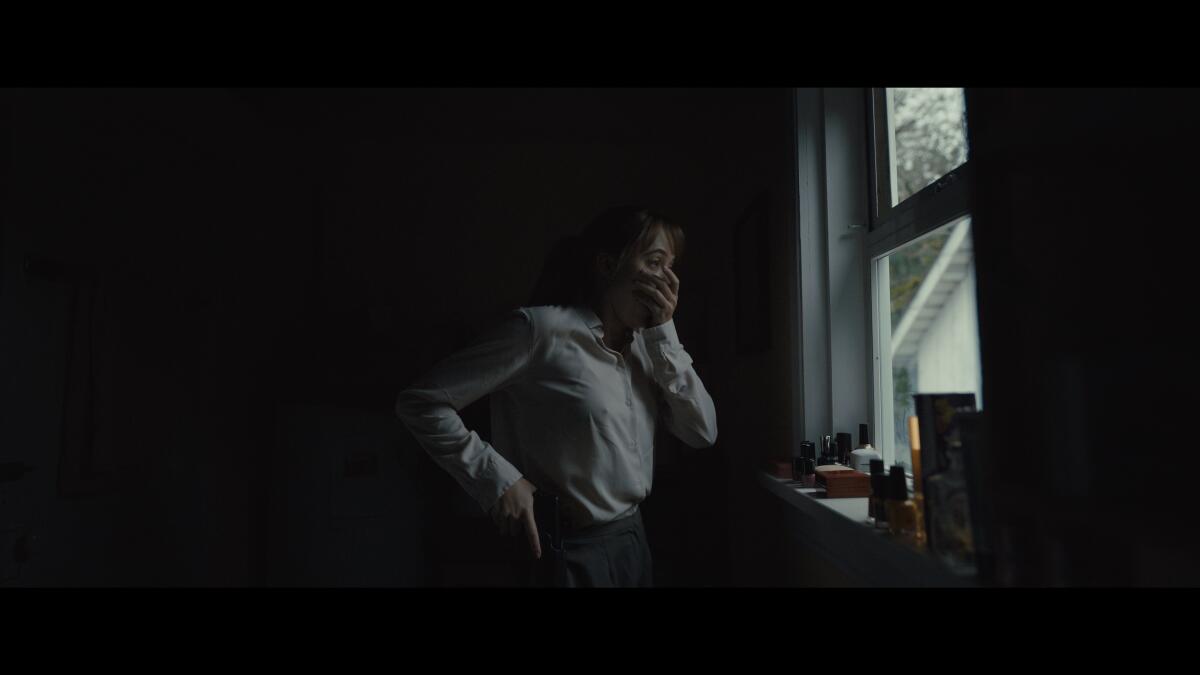
Maika Monroe in the horror movie “Longlegs.”
(Neon)
Osgood Perkins’ extremely creepy serial-killer thriller “Longlegs” became one of the surprise hits of the summer when it wildly overperformed at the box office, bringing in more than $22 million. Christi Carras took a look at the clever marketing campaign behind it that made the film the biggest opening ever for distributor Neon.
Barry Levitt spoke to Perkins, who has been quite open about how the film’s story includes elements of his complicated relationship with his famous parents, actor Anthony Perkins and model Berry Berenson.
“I made a decision early on that characters are going to essentially stand in for me in some way or another,” Perkins told The Times.
Free screening of ‘Kneecap’
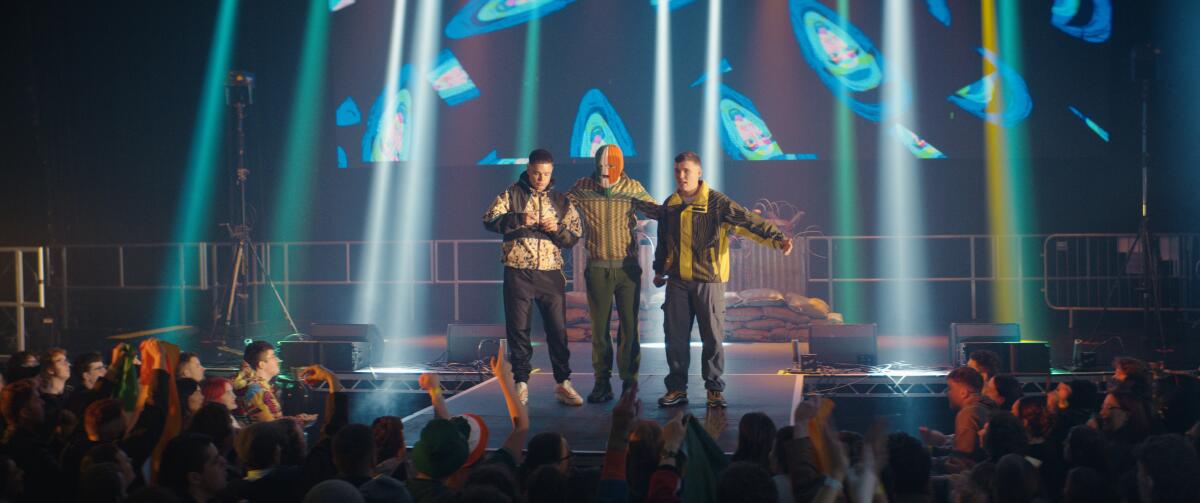
A scene from the movie “Kneecap.”
(Ryan Kernaghan / Sony Pictures Classics)
This Wednesday we will have an Indie Focus Screening Series event with the film “Kneecap,” followed by a Q&A with writers-actors Móglaí Bap, Mo Chara and DJ Próvaí, plus director Rich Peppiatt. The vibrant, high-energy comedy is the semifictionalized account of an Irish-language rap group in Belfast whose members become unlikely political figureheads.
Tickets to the event, at the Regal L.A. Live downtown, are free. You can RSVP here.
